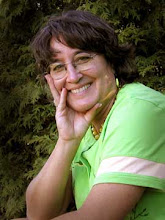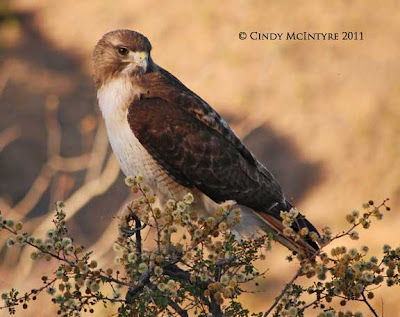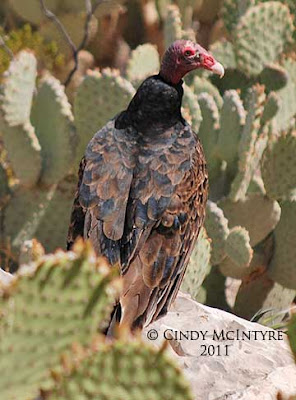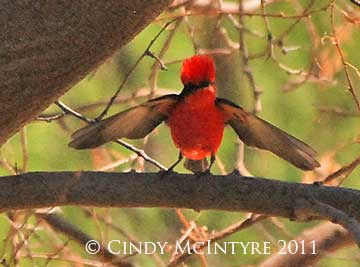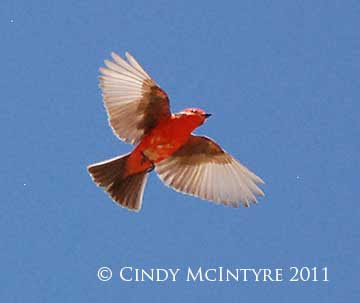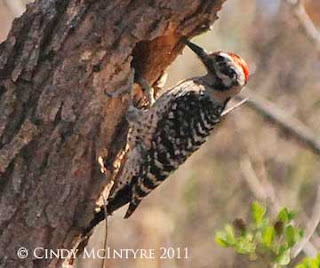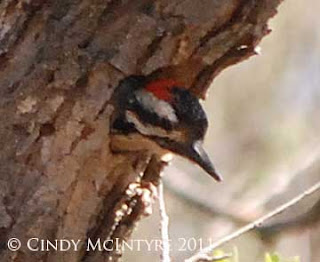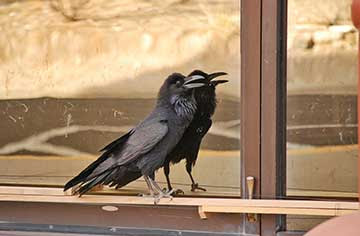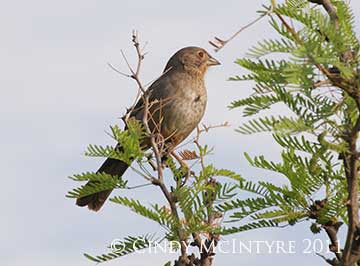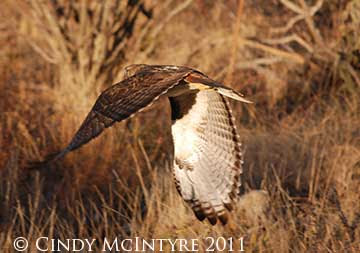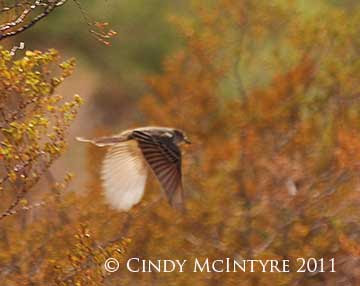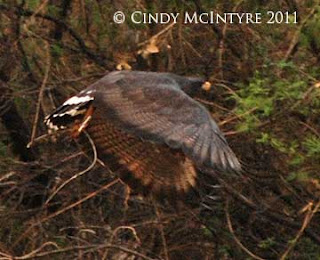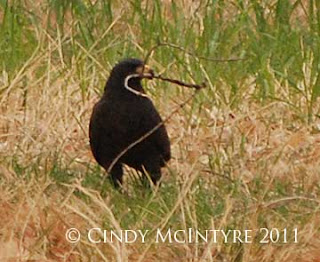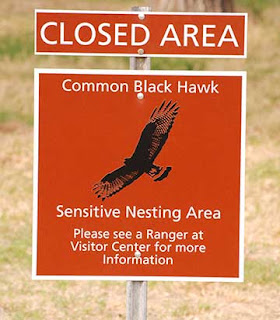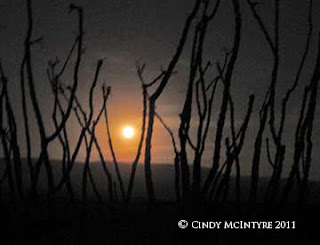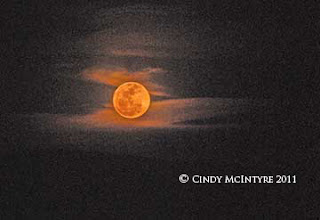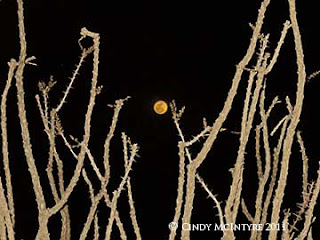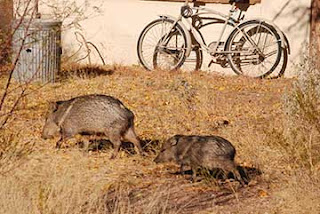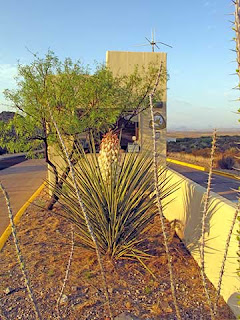“West Texas in Spring has its Sunday britches on…” - Sam Watson
That was a line from one of the poems recited at the Cowboy Poetry Gathering in Alpine, Texas on Friday, February 25. Cowboys, ranchers, and Western poets and musicians came together for the 25th year of the gathering, and Doug (my co-worker at the Entrance Station) was kind enough to swap days with me so I could attend.
I joked that I was going to rope me a cowboy and drag him home, but the truth is that as much as I love horses and the romance of the Westerns of my childhood, I stuck out like a sore thumb there. (I stick out like a sore thumb no matter where I am.) I mean, I was dressed in my usual artsy fartsy garb - a chartreuse t-shirt from the Santa Ana Wildlife Refuge, multi-colored baubles on neck and ears, and equally multi-colored belt and socks (those distinctive purposely-mismatched Sole-Mate socks so popular in New England.) I did have on jeans, but they were black, and I wore New Balance running shoes instead of pointy, well-tooled boots. Denim was the predominant color among attendees, along with lots of those lovely Stetsons.
“Moral to this story, never judge by what they wear…” (Marty Robbins- Cowboy in the Continental Suit)
So anyway, I was late arriving as it took for-damn-ever to get breakfast in Terlingua thanks to a dirt biker rally, and I wasn’t sure when the gas pumps opened there, so I didn’t leave at 6 a.m. as I had planned. (Gas $3.51 Terlingua, $3.39 Stripes in Alpine. Ouch.) I got to the
Sul Ross University auditorium in the middle of a set by Jeff Gore and Washtub Jerry, singing Marty Robbins’
Master’s Call, followed by
El Paso. I don’t know why, but I found myself tearing up a little. I mean, I used to hate country-western music as a kid. Yet we all knew those songs, even if we listened to the Top 40 Pop station. This was real singing. A rich masculine voice singing words you could actually understand, instead of growly voices drowned out by electronics, or unsingable drivel about dysfunctional love on today’s pop charts.
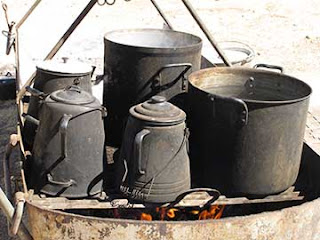 |
| Chuck Wagon Coffee Pots keeping warm |
Of course, now that I live in Far West
Texas for half the year, I figured I’d immerse myself a little in the culture. Like many of the old ways, even the cowboy lifestyle is changed. There was a sea of gray in the large audience, and most of the poets and storytellers were likewise old fellers and gals.
The bunkhouses are empty, lamented one. Technology, off-road vehicles, whatever the reason, there are fewer guys punchin’ cows in the backcountry. And with TV and the internet, fewer of them are creating their own stories and tales. The “tribe” needs new blood. Many of the poems recited (often from memory) were written by cowboy poets who have passed on - stalwarts such as J.B. Allen and Buck Ramsey.
Matter of fact, I was most impressed with the juxtaposition of the “effeminate” Literary and the epitome of Manliness. I never saw “Rawhide’s” Rowdy Yates pen a poem on the back of a fruit can label (J. B. Allen,
Medicine Keeper) or Gil Favour pluck out a tune while on night guard to keep the “dogies” quiet. Roy Rogers just seemed like an anomaly, but I guess he was more representative of many of the old-time cowboys than I understood.
 |
| Stage during Cowboy Poetry Gathering performance |
I’m listening now to the CD by Rod Taylor, whose CD was playing in the sales room when I hunted for the Marty Robbins tribute album I mentioned above. It has such sweet melodies - reminiscent of a couple of Lyle Lovett’s tunes (
This Old Porch being one.). I’d call it Western Folk, but what do I know? I’ve always considered songs to be poetry set to music. And my poetry instructor at the
University of Maine agreed, since we were allowed to do a presentation on a favorite poet or songwriter. (I chose folk singer/songwriter Richard Shindell.)
Cowboys love their horses. They love their cows too. Their poetry and songs are often about these critters that fill their lives, even the ornery ones. I’ve been horse crazy since a little girl, and I’ll watch any movie and read any book about a horse. So I very much appreciated the poem about The Company Horse, who never knew what kind of cowboy was going to ride him, just as a cowboy always hoped for a good string of cow ponies when he worked for “the company.” I cried at “La Rose” (I think that's the name, sung by Jill Jones) whose broken-hearted, broken-down owner needed to sell the “long in the tooth” mare he had since she was born.
The Red Cow by Larry McWhorter was about a young man seeking to prove himself with a mean cuss whose capture was highly prized, but who was, in the end, left alone to her freedom. It reminded me of Townes Van Zandt’s Pancho and Lefty (“All the federales say/ They could have had him any day. They only let him slip away/ Out of kindness I suppose.”)
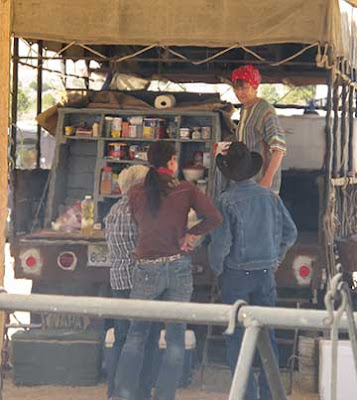 |
| Chuck Wagon serving lunch |
Cowboys in 2023 - the chuckwagon served bagels and choco-latte, the men wore Crocs and spiky hair, “with faces that looked like they fell into a tackle box.” (Sam Noble)
There were poems about people, too, about the land, the cowboy life. Women were not left out, for although everyone knows a good cowboy is made by a good woman - many of whom worked alongside their cowboy husbands - many women wrote, recited or sang poetry. Jill Jones did some mighty fine yodeling, and I couldn’t help think of Prairie Home Companion’s “Lives of the Cowboys.” (Lefty is always playing a poorly tuned guitar and yodeling, to the annoyance of Dusty.)
“I was fifteen before I realized grass was supposed to be green.” - one of the cowboys said about growing up in arid country.
 |
| Chuck Wagon truck |
One sweet faced grandma wrote verse about her mother’s visit after she’d been a young cowboy’s bride. “ ‘Shucks, golly darn it’ ” just won’t do when your horse falls on you, or the cows you’ve spent a half day rounding up escape because somebody forgot to fasten the gate,” she recited. “This is my life, and just get used to the cussin’” she told her mother (my paraphrase.) She also wrote about bundling in layer upon layer of clothing to move cattle in frigid weather, and the need to shed and restore all those layers when nature inevitably calls. It’s a woman thing, it really is.
There were two things that stuck in my craw, so to speak. One was that this same sweet woman mentioned with a touch of vehemence that the former ranches in Oregon’s Willamette Valley were “being destroyed by environmentalists.” Well now, I know many ranchers have become enlightened in recent years and want to co-exist with the natural ecosystems. But it is a plain fact that ranching has historically, and continues to this day, to destroy habitat for the rightful owners of the land - the wildlife. Here in Big Bend National Park, the former grasslands of Tornillo Flats were grazed out of existence prior to the 1944 establishment of the park, and may never recover. Grassland breeding birds have experienced precipitous decline in population due to destruction or degradation of habitat due to ranching, agriculture and development. The native tallgrass and shortgrass and mixed grass prairies have been pretty much exterminated save for remnant parcels “the environmentalists” saved.
In this same afternoon program, one of the men sang about how ranchers owed their livelihoods to the U.S. Cavalry who cleared out the original human inhabitants, and the buffalo hunter who cleared out the cattle’s competitor for rangeland. He also poignantly concluded the ranchers had blood on their hands as much as these Indian- and buffalo-killers. It’s too late for the Comanches, Apaches, and all the other displaced tribes. But it’s not too late for what remains of native habitat and wildlife. Nearly all early settlers of America’s western lands owe their land and livelihoods to the federal government, which used federal troops to exterminate Indians, and which gave free land to homestead. Their descendants would do well to remember that when they complain about today’s “handouts” and “destruction of livelihoods.”
 |
| Dutch Oven biscuits - yum! |
It also struck me that this “Cowboy Road” (“The Cowboy Road - it’s just horses, hats and leather…” - Allan Chapman) is exactly the antithesis of the “Good Red Road” of the Indians that occupied my thoughts and activities 20 years ago. I spent several years “being with” Native American peoples of various sorts - that being a whole ‘nother story - and have great empathy for their sorrows - both historical and contemporary. Cowboys and Indians don’t have to be enemies today, and I suspect they often aren’t.
The
University Center was crowded for lunch, so I was going to skip it when I saw a chuck wagon set up in a field. I asked if it was for the public, and the fellers there assured me it was, and when I asked where the donation jar was they said somebody had forgotten it. But in hindsight I think lunch was for the performers, and these cowboys were just being kind.
 |
| Dutch Oven baking - coals top and bottom |
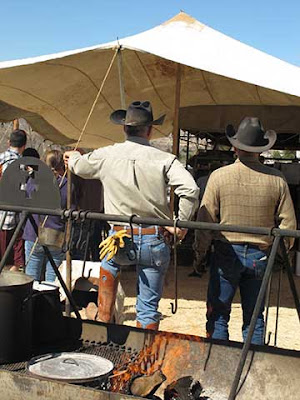 |
| The chuck wagon crew |
Apache Adams and the Australian Jack Sammon sat on the hay bales next to me, and one of the artist-sculptors in the “Trappings of Texas” show at the Museum of the
Big Bend was on the other side. The tender brisket, the cowboy beans, dutch-oven baked biscuits, and fresh salsa with cilantro, were darned tootin’ good. The cook tasted some of the brisket, then rubbed his oily fingers on his boots (a good idea, I thought). Coffee warmed in the huge pots, and windblown dirt and ashes mixed with our food in true cowboy fashion.
From the campus the small town of Alpine below was backdropped by several mountains and hills. The breeze was cool and the day warm. I could see living here someday.
I stayed as long as I could at the night session, but had to leave at 9 pm for the 2 hour drive back to Big Bend, so I could be at work by 7:30 in the morning. Next year maybe Doug will swap me two days, so I can stay longer . It’s something I will definitely look forward to.









